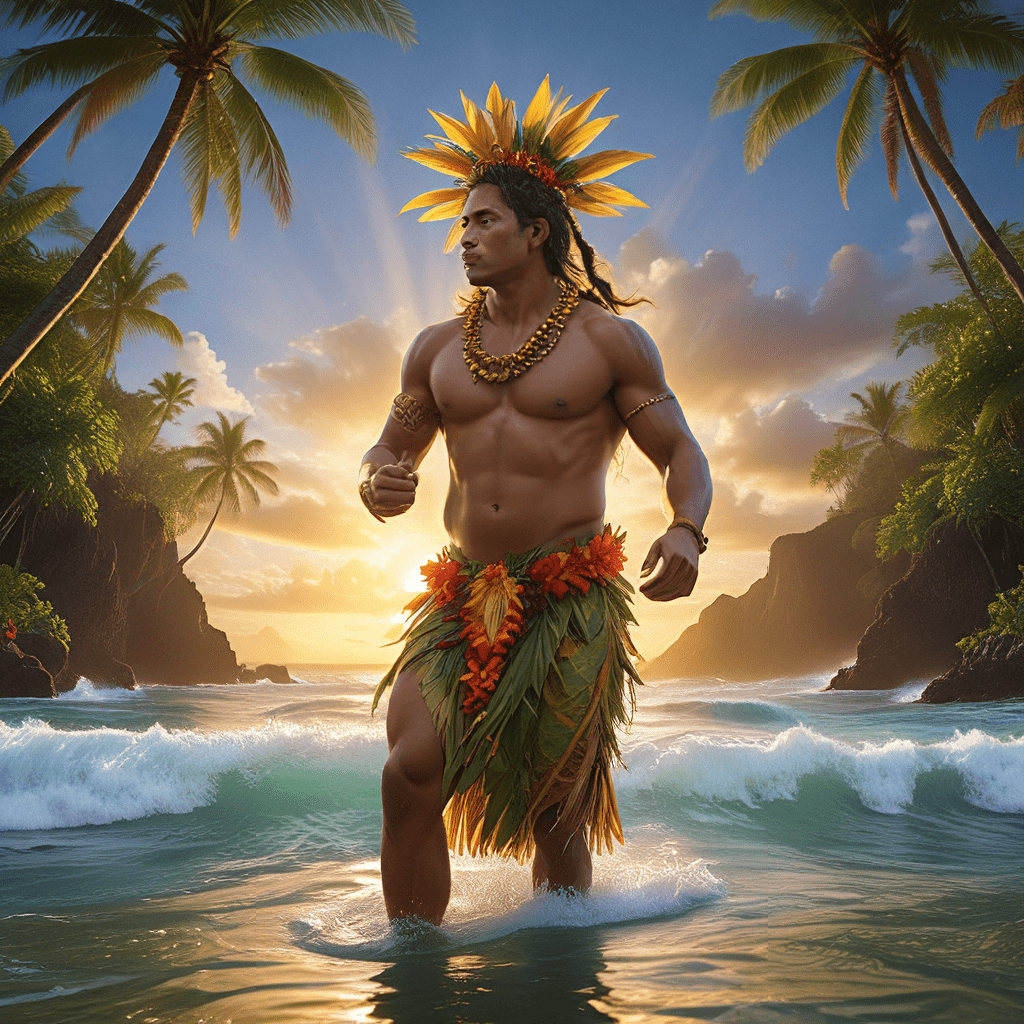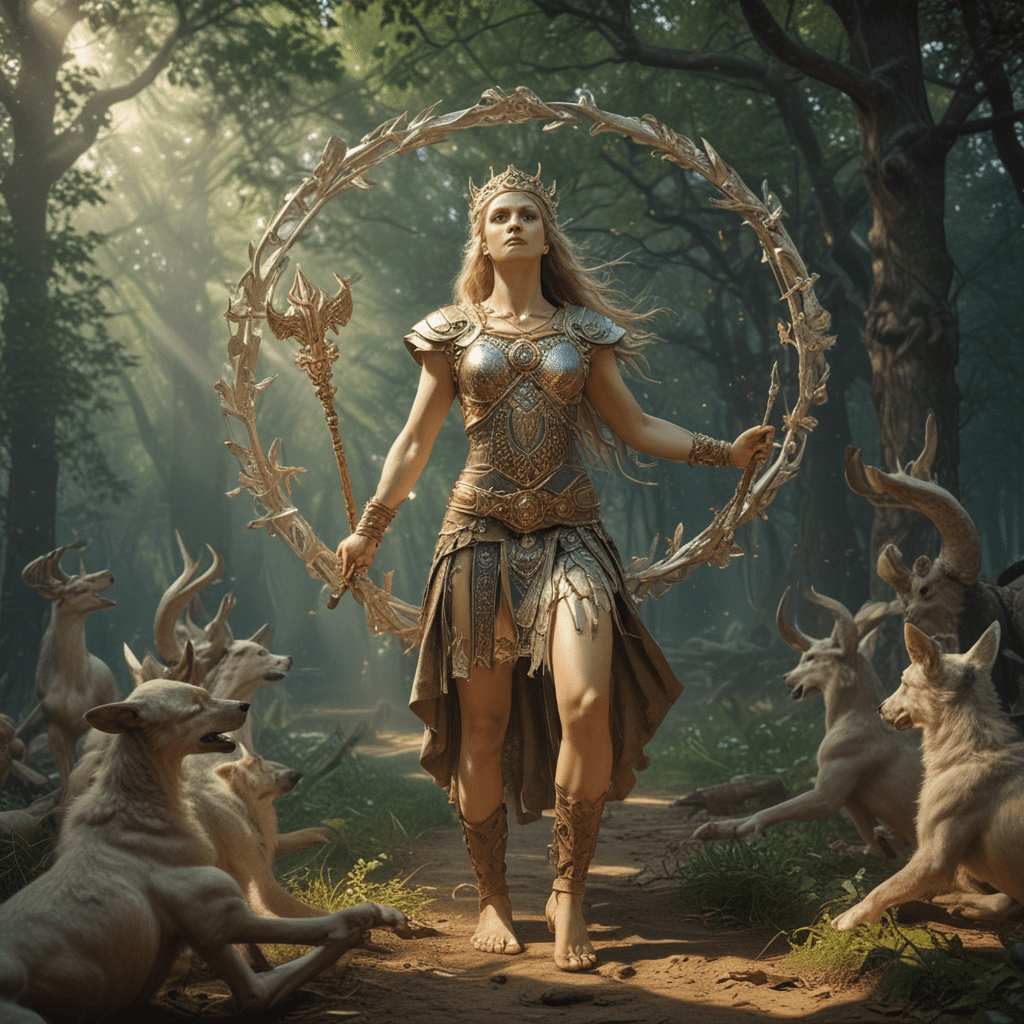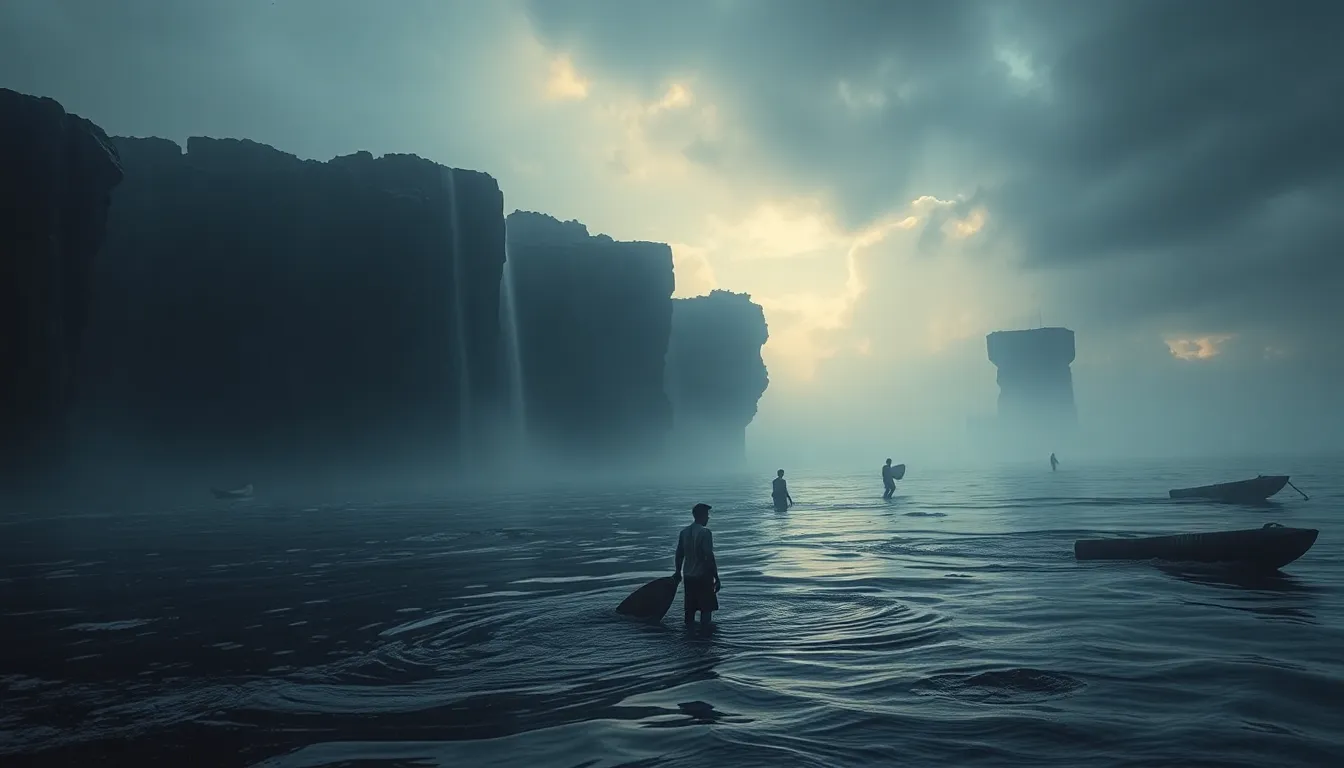The Influence of Hawaiian Mythology on Modern Culture
Hawaiian mythology, a rich tapestry of stories passed down through generations, has left an indelible mark on the island's culture and continues to resonate with people worldwide. These ancient tales, filled with gods, goddesses, and legendary heroes, offer a window into the Hawaiian worldview, their beliefs about the natural world, and their deep connection to the land and sea.
Introduction: An Island of Stories
The Hawaiian Islands, nestled in the vast expanse of the Pacific Ocean, are more than just beautiful landscapes. They are a treasure trove of stories that have been woven into the very fabric of Hawaiian life. These stories, passed down orally for centuries, are the heart and soul of Hawaiian culture, providing a unique understanding of their history, beliefs, and values.
Hawaiian mythology is a vibrant and intricate system of beliefs that explains the origins of the universe, the creation of the islands, and the relationships between humans and the divine. These myths serve as a foundation for understanding the Hawaiian way of life, their reverence for nature, their concept of family, and their love for their homeland.
Hawaiian Mythology: A Tapestry of Gods, Goddesses, and Heroes
Hawaiian mythology is populated with a diverse cast of deities, each with their own unique powers and responsibilities. The most prominent among them are the four major gods:
Kū: The god of war, agriculture, and construction. He is the protector of the land and represents stability and strength.
Kāne: The god of creation, fertility, and knowledge. He embodies the life-giving forces of nature and is considered the most benevolent of the gods.
Lono: The god of peace, abundance, and rain. He is associated with the harvest and represents prosperity and good fortune.
- Kanaloa: The god of the sea, darkness, and death. He is the force of change and the bringer of challenges, reminding humans of their mortality and the cyclical nature of life.
These gods, along with other lesser deities, interact with mortals, shaping their lives, influencing their destinies, and shaping the landscape of the islands. The stories of their interactions, told and retold throughout generations, provide valuable lessons about life, death, and the interconnectedness of all things.
The Creation Myth and its Significance
The Hawaiian creation myth, known as the "Kumulipo," is a powerful and profound story that traces the origins of the universe and the birth of the islands. The myth begins with Po, the realm of darkness and nothingness, and recounts how the islands emerged from the sea, shaped by the gods and populated by humans.
The Kumulipo highlights the interconnectedness of all things, the importance of ancestor veneration, and the cyclicality of life and death. It also emphasizes the powerful role of "mana," a spiritual energy that permeates all living things and connects them to the divine.
The Power of Nature: Volcanoes, Oceans, and the Divine
Hawaiian mythology deeply intertwines the natural world with the divine. Volcanoes, those awe-inspiring forces of nature, are seen as the embodiment of the gods, capable of both creation and destruction. The ocean, another powerful element in Hawaiian life, is also seen as a powerful force that demands respect and reverence.
The island's natural features play a key role in their stories. The volcanic peaks are considered sacred, and the ocean depths hold secrets that were known only to the gods. These myths highlight the Hawaiian understanding of the cyclical nature of life, the importance of balance, and the need for respecting the forces of nature.
Hawaiian Mythology in Modern Literature and Film
The captivating stories of Hawaiian mythology have found their way into modern literature and film, often inspiring writers and filmmakers to explore themes of cultural identity, the power of nature, and the human spirit.
For example, the epic poem "The Kumulipo" has been adapted into numerous contemporary works, including the novel "The Kumulipo" by Wayne Kahe'aina Wong, which delves into the meaning of the creation myth and its relevance in modern Hawaiian society. The poem's powerful imagery and deep spiritual significance have also resonated with filmmakers, inspiring films like "Moana," which draws heavily on Hawaiian folklore and mythology, presenting a modern interpretation of the journey of a young Polynesian woman and her encounter with the gods.
The influence of Hawaiian mythology is also evident in modern literature, such as the works of Hawaiian authors like Kiana Davenport, whose novels often explore the complexities of Hawaiian identity, drawing upon themes and characters from their rich mythology. The mystical elements and enduring stories of Hawaiian mythology offer a unique lens through which to explore universal themes of love, loss, courage, and the search for meaning in life.
Modern Interpretations and Adaptations of Mythology
Modern artists, writers, and performers have reinterpreted and adapted Hawaiian mythology in innovative and thought-provoking ways, reflecting the ongoing evolution of cultural expression. Contemporary artists have incorporated elements of Hawaiian mythology into their work, creating vibrant murals, sculptures, and installations that celebrate the beauty and power of traditional stories and their continuing relevance in modern society.
Musicians have also drawn inspiration from Hawaiian mythology, creating music that blends traditional Hawaiian melodies with contemporary sounds. The use of ancient chants, rhythms, and instruments in modern music serves to amplify the cultural significance of these stories and connect them to a wider audience.
These modern reinterpretations demonstrate the enduring power of Hawaiian mythology to inspire creativity and cultural expression. By integrating traditional stories into contemporary art forms, artists create new perspectives on ancient beliefs and explore the ways in which these stories continue to resonate with modern audiences.
Hawaiian Mythology and the Environmental Movement
Hawaiian mythology is deeply intertwined with environmentalism, emphasizing the interconnectedness of humans and nature. The reverence for land, sea, and the forces of nature that are prevalent in these stories resonates strongly with contemporary environmental movements. The ancient tales serve as a reminder of the importance of stewardship, sustainability, and the need to protect the natural world for future generations.
The stories of Hawaiian mythology offer powerful metaphors for environmental stewardship and the consequences of neglecting the environment. For example, the myth of Pele, the goddess of volcanoes, serves as a cautionary tale about the destructive power of nature and the need to respect its boundaries. The story of the goddess Hi'iaka, who defies the wrath of Pele to protect her family, reflects the courage and determination needed to defend the environment from harm.
The enduring messages of respect, balance, and interconnectedness found in Hawaiian mythology have inspired countless individuals and organizations to advocate for the protection of the natural world.
The Enduring Impact: How Hawaiian Mythology Continues to Inspire
Hawaiian mythology has left a lasting legacy, enriching the culture and inspiring generations with its profound stories. These tales continue to shape the lives of Hawaiians today, offering guidance, wisdom, and a deep connection to their ancestors and the land.
The stories of Hawaiian mythology have also spread beyond the islands, capturing the imaginations of people around the world. The enduring power of these stories lies in their universal themes of creation, courage, love, and loss.
The enduring legacy of Hawaiian mythology serves as a testament to the power of storytelling to preserve cultural heritage, inspire understanding, and shape the future. These stories connect us to our past, remind us of our interconnectedness, and challenge us to live in harmony with nature.
Conclusion: A Heritage of Storytelling for Generations to Come
Hawaiian mythology is a vital part of the island's cultural heritage, offering a rich tapestry of stories that continue to inspire and educate. These myths, passed down through generations, provide a unique insight into the Hawaiian worldview, their relationship with the natural world, and their enduring connection to their ancestors and the land.
As the stories of Hawaiian mythology continue to be shared and reinterpreted, they offer valuable lessons for today and the future, reminding us of the importance of respecting nature, valuing cultural heritage, and preserving the environment for generations to come.
Frequently Asked Questions (FAQ)
What are some of the most famous stories in Hawaiian mythology? Some of the most famous stories include the creation myth of the "Kumulipo," the tales of Pele, the goddess of volcanoes, and the adventures of Maui, a demigod known for his trickery and strength.
What is the significance of the "mana" in Hawaiian mythology? "Mana" is a spiritual energy that permeates all living things and connects them to the divine. It represents the power and vitality of life and the interconnectedness of all things.
How does Hawaiian mythology reflect the importance of family and community? The stories often emphasize the importance of family and community, highlighting the values of loyalty, respect, and collective responsibility.
What are some ways in which Hawaiian mythology has influenced modern culture? The stories have been adapted into films, novels, and music, inspiring artists, writers, and musicians to explore themes of cultural identity, the power of nature, and the human spirit.
What can we learn from Hawaiian mythology today? The stories offer valuable lessons about respecting nature, preserving cultural heritage, and living in harmony with the environment. They remind us of the importance of connection to our ancestors, our communities, and the natural world.



